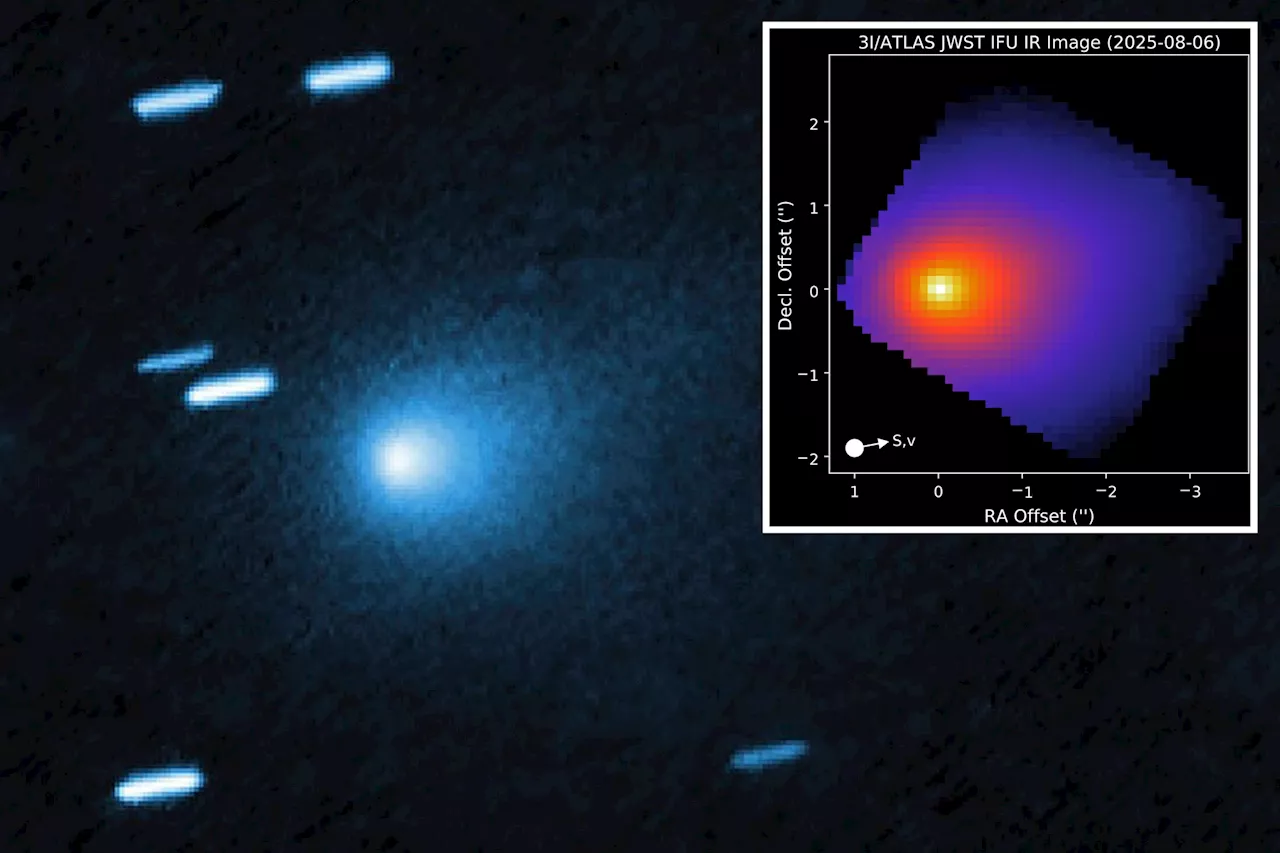Science
Interstellar Object 3I/ATLAS Emits Unique Metal Alloy, Say Experts

An interstellar object known as 3I/ATLAS is emitting a metal alloy previously unseen in nature, according to a report from Dr. Avi Loeb, a theoretical physicist at Harvard University. Recent observations taken by the Keck II telescope in Hawaii revealed that this object is producing approximately four grams of nickel per second, with no detectable iron—a phenomenon unusual for comets.
The alloy identified is nickel tetracarbonyl, a compound typically found only in industrial applications. “There is only one place where that is known to exist, and that is in industrially produced nickel alloys,” Dr. Loeb stated. “This was never observed for any other object.” The significance of this finding lies in the fact that the refined compound is widely used in metal coatings within the aerospace industry to enhance the durability of surface materials.
Unusual Characteristics of 3I/ATLAS
Another striking feature of 3I/ATLAS is its lack of a traditional cometary tail. Dr. Loeb noted that, unlike typical comets, which often exhibit beautiful tails extending away from the Sun, 3I/ATLAS shows no evidence of such a formation. Instead, a recent image from the Hubble Space Telescope indicated a stream of materials flowing towards the Sun at a rate of approximately 330 pounds per second. “Why are we seeing a jet pointed at the Sun? A stream of material in the direction of the Sun?” he questioned.
The material detected is primarily composed of carbon dioxide and water, with trace amounts of cyanide and nickel. This unusual behavior raises questions about the mechanisms at play in the object’s composition and activity.
Awaiting Further Observations
Astronomers and space enthusiasts are eagerly anticipating additional data from the Mars Reconnaissance Orbiter. Images captured by its HiRISE camera from October 4 to 7, 2025, are expected to provide further insights into 3I/ATLAS. However, these images have yet to be released due to a government shutdown affecting NASA’s communications department.
Dr. Loeb expressed frustration over the delay, emphasizing that the scientific community is eager for the data. “Who cares about the communication departments? We want to see the data from the scientists,” he asserted. These forthcoming images may represent humanity’s closest look at 3I/ATLAS during its brief passage through our inner Solar System.
As research continues, 3I/ATLAS stands as a fascinating example of the mysteries that lie beyond our planetary system, challenging existing theories about the formation and behavior of celestial objects.
-

 Health4 days ago
Health4 days agoRare Brain Condition Discovered More Common in New Mexico
-

 Politics5 days ago
Politics5 days agoPrince Andrew Steps Back from Royal Duties Following Epstein Memoir
-

 Health5 days ago
Health5 days agoRemembering Mary Ingleby: A Life of Love, Teaching, and Music
-

 Sports5 days ago
Sports5 days agoMLS Decision Day 2025: Playoff Spots on the Line as Teams Clash
-

 Science5 days ago
Science5 days agoIdaho State University Launches Haunted Science Laboratory on Oct. 25
-

 World5 days ago
World5 days agoYoung Driver Dies in Collision with Box Truck in El Cajon
-

 Lifestyle5 days ago
Lifestyle5 days agoKent Hamilton Named Southeastern Farmer of the Year at Expo
-

 Business5 days ago
Business5 days agoFirst National Bank of Groton’s Quiet Period Ends October 21
-

 Entertainment5 days ago
Entertainment5 days agoTrump Commutes George Santos’ Sentence, Sparks Controversy
-

 Politics5 days ago
Politics5 days agoNavy Veteran Max Quattromani Launches Campaign for Assessor Seat
-

 Sports5 days ago
Sports5 days agoSaquon Barkley Reacts to James Franklin’s Dismissal from Penn State
-

 World5 days ago
World5 days agoHamas to Return Additional Hostage Remains on Friday









